I am having architectural shingles applied to a hip roof with a small dormer in the front plane. Both main roof and dormer are about a 9/12 pitch. The application guide on the shingle wrapper states that the smaller roof should be shingled first, running the shingles through the valley. The main roof shingles are then applied over the dormer shingles and are to be cut 2″ back from the valley centerline. The roofer is basically doing the opposite, starting with the main roof shingles, running them up the dormer roof, then applying and cutting the dormer shingles at the valley centerline. I questioned why he did the main roof first and he said, “it doesn’t make any difference”. Does it?
Discussion Forum
Discussion Forum
Up Next
Video Shorts
Featured Story
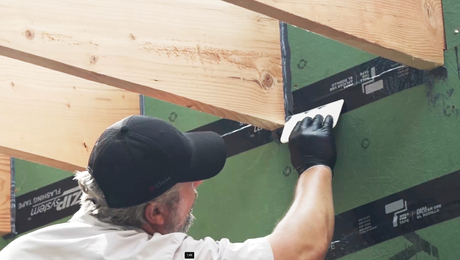
Michael Hindle explores the efficacy of deep energy retrofits and discusses essential considerations for effective climate mitigation.
Highlights
"I have learned so much thanks to the searchable articles on the FHB website. I can confidently say that I expect to be a life-long subscriber." - M.K.
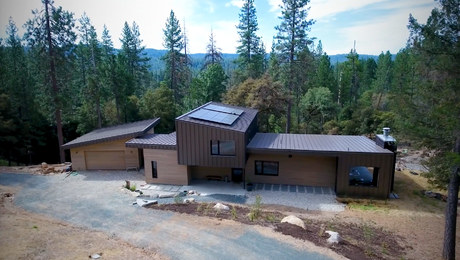










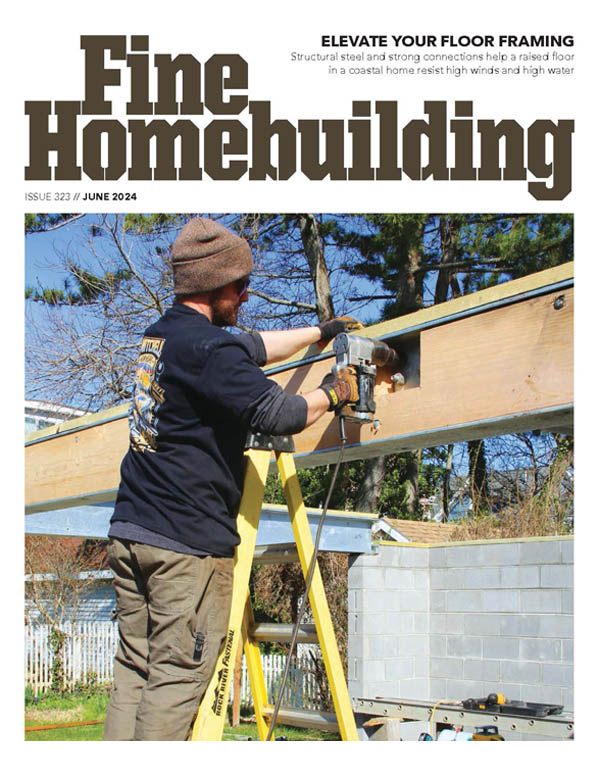

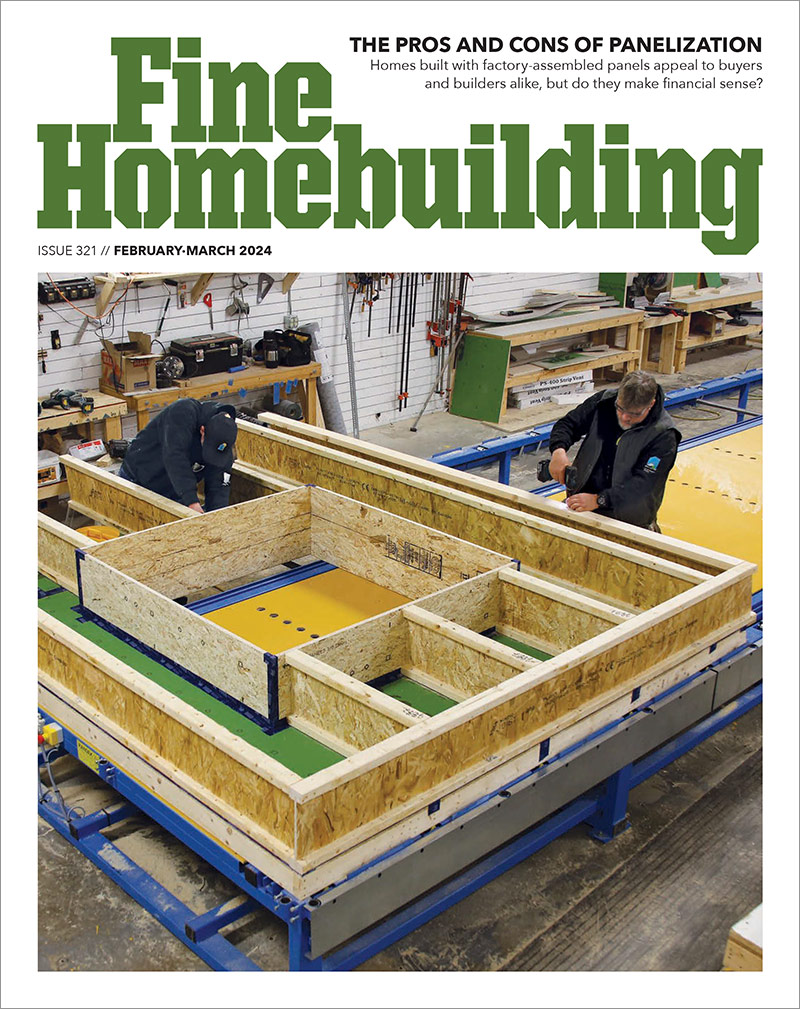

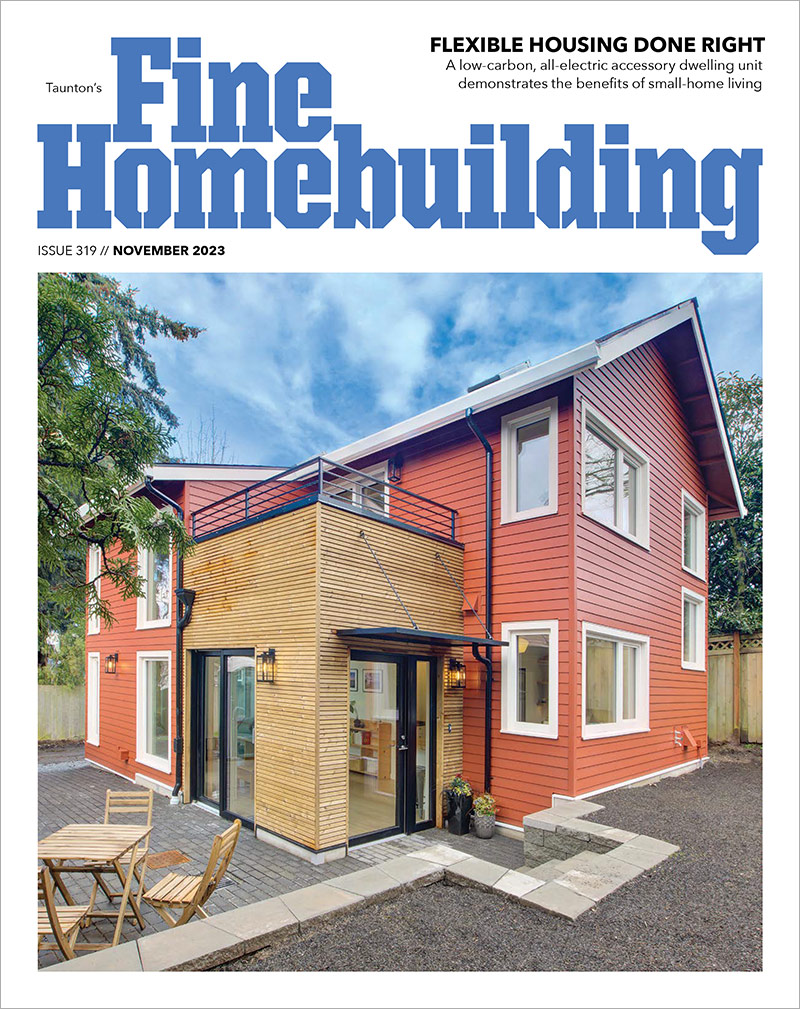

Replies
It might not make any difference, but the reason for installing the little roof first is the majority of the water is running over the cut side rather than into it. If the dormer is near the top of the big plane, it's wrong, but not that big of a deal. It could be more problematic the further down the big plane the dormer is.
STOP, DROP, ..............ROCK 'N' ROLL
I don't think it should much matter, either the valley is waterproof or it isn't. If it is, then no worries. One could argue that the main roof sends more water to the valley than the small roof, but on a valley between two large intesecting roof planes one side is going to take the brunt of it no matter which side goes first. Bottom line: Prep the valley properly (link), and apply the valley shingles carefully, and you should be good to go. Especially with a roof as steep as 9:12, I can't see there being any problem.
I'm with theother guys - I don't think it's terribly important.
The roofer may be trying to make the overlap the other way to make better sight lines. ie: When you look up at the roof, you're not looking into the cut side of the valley. With a steep roof that might look better.
View Image
Doesnt anyone weave them anymore?
Amen ADM,
i believe this is the most water proof way shingle a valley, the only time i do it the way we are talking now is if there is a significant difference in the pitches. i went to fla to shingles my in laws roof and i noticed all, with the exception of maybe 2 roofs all had cut valleys. i also put down 2' metal under being careful not to nail to close to the center of the valley. there some guys here who think that if you weave a valley you dont need metal. thats bs. i have repaired a lot damage to a weaved valley with no metal.
it must save a little time to put in a cut valley but i would sure sleep better knowing my valley was weaved.tyke
Just another day in paradise
yep, on the few (VERY FEW) I don't sub out. I have always been a firm believer in weaving, if for no other reasons than pleasing appearance.
There are six ways I know iof to run a valley. There is no best way for all situations, but I am totally suprised that the manufacturers recommended a lapped valley, bedause that is IMO, the worst way to run an architectural grade laminated shingle. I prefer a "w" style metal valley for them.
But be that as it may, the label is definitely right on the direction of the lap. The greater volumn of water will be coming from the larger roof, creating enough force in a gheavy rain to push the flow under the lapp. If the shingle layer has no opiniopn that it matters one way opr the other, he has little experience repairing leaks.
But if this dormer is withing four feet of the ridge, and he has klined it with Ice and Water shield as he should have, then I doubt you have anything serious rto worry about.
Feel free to disagree with me. I only had twenty years roofing before I moved up the ladder
Welcome to the
Taunton University of Knowledge FHB Campus at Breaktime.
where ...
Excellence is its own reward!
Piffin - what is the reason for making the cut 2" off of the center line?The impression I get is it is mainly to minimize debris catching along the edge, but figure you might have other info.(FWIW, 99% of the valleys in my area are cut, .5% woven, .5% with metal)
View Image
Sojourners: Christians for Justice and Peace
I presume when you say 'cut', you mean lapped as described above. Other than a woven valley, it is impossible to run any other valley style without cutting the shingles.i'm not sure why they would recommed the 2" cutback from center other than your presumption of debris removal. With open cut metal valleys we would run 3-4" wide of metal exposure for the same reason, which would be 2" from center
Welcome to the Taunton University of Knowledge FHB Campus at Breaktime. where ... Excellence is its own reward!
Thx
View Image
Sojourners: Christians for Justice and Peace
My guess is so that the top layer doesn't have to bend near the end, and will bond better rather than bridge across the arc caused by the bottom layer.
Hijacking.
For your preferred "W" metal valley, tell me how you follow the best practice method, and make the valley progressively wider as it descends to the eaves.
Who says that is the best practice method?
Personally, I'll disagree, but it is easuy with a W to cut an opewn metal valley withthe curtkline at 1-1/2"form center at top and 2" from cener at bottom.
But I oprefer to close the valley, cutting at the crease in the W
Welcome to the Taunton University of Knowledge FHB Campus at Breaktime. where ... Excellence is its own reward!
Valley width increase. Read about it at, I believe, some page at a National Roofing Contractors Association page, or something like that. Also on page 275 of JLC's Field Guide. Perhaps it's all circular, and JLC got the story from the NRCA page. Way back in my long-ago industrial metal roofing and siding life, I recall a big skewed valley on a roof over a big melt shop out in Gary, IN. But that roof had acres on it.
Makes sense to me. Heck, the mighty Mississippi ain't so mighty up near Bimidji, but it's a whopper when it goes under the Huey Long Bridge in New Orleans.
JLC recommends 1/8" more width for every foot of run, but I have never seen this done on a house roof.
I used to do it when I started, never saw any benefit from it, and when I quit, never saw any deficit from running it straight.
Welcome to the Taunton University of Knowledge FHB Campus at Breaktime. where ... Excellence is its own reward!
I really like the look of the woven valley, but it might look crowded on a high pitched roof like the 9:12 that was mentioned. I've got 50-year OC architecturals on my house, 4:12 pitch. One valley is just outside a second floor window, and I smile each time I see it, because it looks so pretty to me. The woven valley seems like it would be more waterproof against the water slopping up the opposite roof pitch during a downpour. We live near the sea, so metal valleys are not my choice here, although I like the look of a good tin valley with the center ridge to deflect the wash.Bill
With slate we always use open metal (copper,lead coated,galvanized or the new Freedom gray) valleys,tapered in a 20' run say from 8" exposure at the top to 9" at the bottom.
The taper helps to let ice accumulations free themselves without wrecking havoc on the valley slates.
We use a single bend in the valley so it lays with the sheathing.It's never been a problem with water washing up and over the opposite side-plus I think it looks cleaner too.
I use the same setup for architecturals too.
Copper works fine near salt air.A woven valley is in my opinion the worst choice for architectural shingles. The only way I will accept doing it that way is if it is well backed up with membrane and/or metal AND the weather is warm when the shingles are laid.
Reason is because the heavy lamination when the shingle parts are mayered together will break it's seal very easily when flexing through a valley. I learned this way back in hte seventies when GAF first pioneered the style with the Timberlines and have seen it with other brands since.
Besides, if you think abbout it, heavy archies are made to emulate the look of cedars or slates, and neither of them will ever be woven through a valley. The woven look is inconsistant with the material choice.
Welcome to the Taunton University of Knowledge FHB Campus at Breaktime. where ... Excellence is its own reward!
i never really that about that the emulation and i have been installing roofs for a 16 years. i weave my valleys here primarily because of the amount of hurricanes we get here. otherwise i guess a w would look real nice. i never did like the look of an open valley and have found some to leak because of poor installation practices. i think a nice copper w would look real nice with hte right color archi.tyke
Just another day in paradise
Out of all six ways to run a valley, any will leak when it is poorly installed.
Welcome to the Taunton University of Knowledge FHB Campus at Breaktime. where ... Excellence is its own reward!
yep
tyke
Just another day in paradise
I think he might be doing it this way (dormer first) so the extra thickness doesn't end up on the main roof and possibly more visible. I don't think it makes any difference if installed carefully. We put 14 in aluminum, then 36 in mineral roll under the cutover valleys - also blackjack under the cutover edge.
I like the cutover valley the best. I think it ends up looking better than the woven valley - especially when the roof starts to age - the woven valley will be the first place to swell and look bad.
The open valley has more cuts and more ways for water to get in.